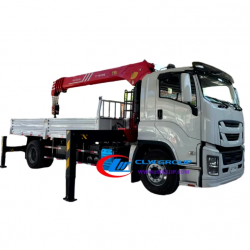Four Predictions of The DTF Transfer Printer

Four Predictions of The DTF Transfer Printer
This time of year appears to be when everyone is reflecting on the previous year while also looking forward to the next. And, as we gaze into the future with our crystal ball, we wonder what new or unusual things we can all expect to see. Given the meteoric rise of DTF transfer printer decoration in recent years, we’ll cast our own forward-looking glances. Here are four predictions for the future of DTF technology over the next 12 months.
Epson DTF printers.
- A Gain in Popularity
Do you think the popularity of DTF transfers has peaked? They didn’t do it! We believe that by 2023, this decorating technique will be more widely used. Why is it so popular? Clothing decorators can use these transfers to create full-color images on a single sheet of film, which can then be used to decorate nearly any type of fabric, including 100% polyester, cotton-poly blends, tri-blends, and more.
Early adopters of this technology have surpassed the learning curve and are ready to ramp up production levels. The procedure’s simplicity will entice more owners, sales representatives, and production managers of garment decorating, branded merchandisers, and print and promotional businesses. Many DTG printer owners who are currently in business will see this opportunity as well. It is advantageous for these operators to have a DTG and DTF machine at the same time. These owners may use the same equipment, inks, and software as the Epson F2100 and F3070 DTG printers to generate DTF transfer printer. There is no requirement for any type of conversion.
Many DTG owners who added DTF transfer printers to their customer offerings in 2022 had to install more printers to keep up with client demand. In 2023, the number of printers added will skyrocket.
- More Affordable Desktop Printers
As the demand for DTF transfers grows, more people will be tempted to try the DIY option. Buying a desktop inkjet printer and converting it to a DTF transfer printer on your own will most likely be a frustrating experience. But you shouldn’t do something just because a few YouTubers can. If you choose the “low-cost route,” you will undoubtedly face some difficulties and setbacks, as with any novel production technique. Who will be there for you if you run into trouble? It’s not the company listed under the printer’s name! You’ll waste hours watching YouTube videos from “experts” who are nine to twelve months older than you. They will prescribe creative “workaround-solutions” to keep the printers running temporarily. It is not always profitable simply because it is conceivable. Simply put, just because you have the ability does not mean you should. FACT: These printers were designed to be paper printers rather than film printers. As a side note, these converted desktop printers can be very slow. When we say “extremely slow,” we mean you can only make three transfers per hour, or 24 transfers in an eight-hour period. Maintaining such a low manufacturing rate is unprofitable for anyone.
- An Increase in Cheap Imported Printers
We haven’t seen the last of the Chinese desktop inkjet printers designed to be low-cost or imitation paper printers, as DTF transfers continue to grow in popularity. Unfortunately, some customers will be disappointed as these printers are also being converted to DTF printers. Subpar production is the problem with our post-pandemic, overstressed supply chain. Poor printheads, motherboards, and circuitry from China and other countries have flooded the market. Many buyers are concerned about the UL and CE ratings and certifications of these electrical parts. (There could also be an issue with your company’s insurance.) Searching the internet for replacement printheads, which frequently fail within the first three to six months of use, or other parts while your printer is broken is not a profitable strategy.
You got a great deal on the printer, but what about after-sales support? Was your education adequate? How did you find out about the best printing environment? Who will be your coach, and will they be from your country or at least your time zone? Do they even understand you? Is it possible to reach them by phone or Zoom? What kind of guarantee is offered? Even so, do they come with a warranty?
Because DTF transfer printers are a new technology, many people and businesses interested in using them have little knowledge of inkjet printers, ink systems, adhesives, and so on. The wise man would advise you to invest in tools and businesses that will aid you in your new adventure.
- Larger Production to Increase Speed and Output
More apparel decoration businesses will recognize the potential for specialized DTF transfer printers production. Larger, faster printers with output comparable to automatic screen printing production will continue to be developed. Individual transfer customization, on the other hand, will make DTF printing more appealing in the emerging world of one-off decorating, as opposed to large production screen printing.
These production packages will be developed as interconnected systems. The kits will include an inkjet printer, powder application, a shaker, and a conveyor drier to cure the ink and melt the powder. Overall output will increase to meet the growing demand for DTF transfers.
Predictions are more likely here than gazing into a crystal ball. However, one thing is certain: DTF printing is the industry’s newest and most well-established component.






Ingen kommentarer endnu